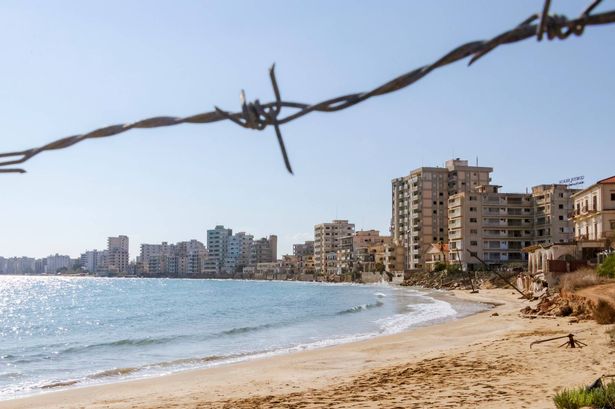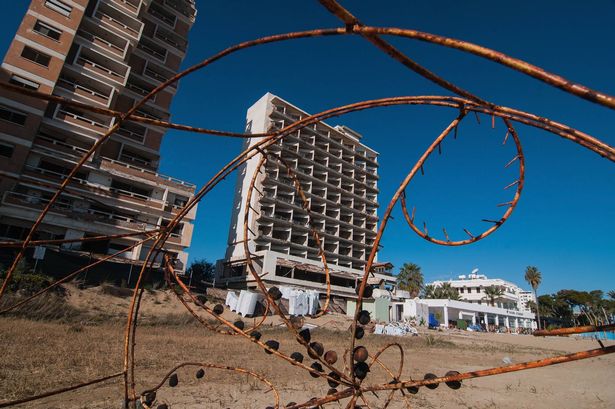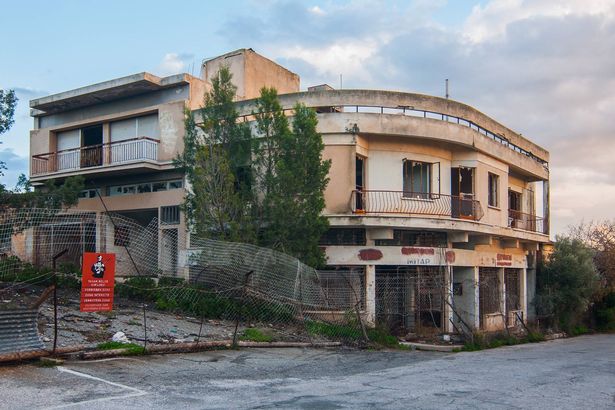Once a playground for the rich and famous, the city’s glamorous resorts, skyscrapers and shopping areas have been left to rot for decades. It looks very different nowadays
Strolling through Varosha today, visitors can’t help but feel they’ve stepped onto the set of a disaster movie. But this wasn’t always its story. Once the crown jewel of the Cyprus city of Famagusta, the district of Varosha was the go-to luxury destination in Europe for years.
It played host to the glitterati, with icons like Elizabeth Taylor and Richard Burton gracing its lavish resorts, towering skyscrapers, and bustling shopping districts. Varosha rose to fame as a travel mecca in the 1970s, renowned for its extravagant allure. However, its fortunes took a drastic turn in 1974 when conflict tore through the area.
Following a Greece-backed coup, Turkish forces invaded, splitting the island and sealing off Varosha from the outside world. Since then, it has been a snapshot of the past, untouched by time. Now, Varosha stands as a haunting relic; a testament to its former glory.
YouTuber Pau Clavero, also known as hiclavero, explored the now-abandoned resorts in a viral video. “This was the Miami of Europe,” Clavero remarked, navigating through the desolate former hotspots.
Although parts of Varosha are accessible via guided tours, much of it remains under military watch, cordoned off from public access. The city was encircled by fences and declared a military zone.
The United Nations prohibited any resettlement efforts unless the original property owners of Varosha were involved.
“They thought they would return home in a few days, but they never did,” Clavero narrated, recounting the plight of Greek Cypriot inhabitants who evacuated, leaving everything behind – homes, businesses, vehicles – all now under the shadow of occupation.
The controversial army of Northern Cyprus, a region acknowledged only by Turkey, creates a heavily controlled atmosphere with a somewhat post-apocalyptic aura in the area.
Clavero shared: “They took my passport and subscribed to my channel to monitor me.”
Abandoned shops, clubs where “someone probably had their first kiss,” and a bank still brandishing its signage all mark a city caught between coastal beauty and decay.
The YouTuber remarked gave his honest verdict of the area, remarking: “This is like Chernobyl but without radiation.”
His popular video, which has attracted the attention of thousands, has reignited interest in the desolate Varosha. But it’s not merely the sheer size or the extent of its preservation that fascinates onlookers.
Arguably, the most jarring sights are that of tourists wandering near dilapidated structures or pristine beaches cordoned off by a fence. “It’s like being in a sci-fi movie but real,” Clavero said.
In 2020 the controversial Turkish President Recep Tyyip Erdoğan, alongside Turkish Cypriot Prime Minister Ersin Tatar, reopened sections of the area, in what many perceived as a political strategy.
Both the UN and the European Union denounced this action, while thousands of Greek Cypriots persist in reclaiming their properties in Varosha through the European Court of Human Rights.
It leaves Varosha’s political climate as gridlocked as it was half a century back. Cyprus remains partitioned, with Varosha partially accessible. Tragically, the once thriving home and destination has become a symbol of an unresolved conflict.


